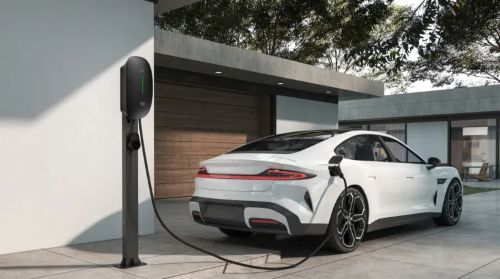


Why Your EV Charges Slower Than Expected — And What You Can Do About It
As a professional EV charger manufacturer in China, Topper Company delivers dependable electric vehicle charging stations and comprehensive solutions.
Electric vehicle (EV) owners often expect fast, reliable charging. However, charging speeds can vary widely—and often seem slower than anticipated. While high-power stations exist, actual charging speed depends on several factors, including the vehicle’s hardware, battery condition, and external conditions. Understanding these factors helps optimize charging and extend battery life.
Every EV has a maximum charging capacity. No matter how powerful the charger, your vehicle can only draw what it’s designed to handle.
Entry-level: 3.7–7kW
Mid-range: Up to 11kW
Premium: Up to 22kW
Economy: Up to 50kW
Mainstream: Up to 150kW
High-performance: 250kW or more
Example: If your EV caps at 50kW, plugging into a 150kW charger won’t charge faster.
Over time, EV batteries lose capacity and charging efficiency. Older batteries:
Charge slower, especially at high power
Accept less energy due to wear
Most EVs use battery management systems to protect against damage, often reducing charge rates as batteries age.
EVs charge fastest when nearly empty and slow down as they fill up.
0–50%: Fastest charging
50–80%: Moderate speed
80–100%: Much slower
For long trips, charging from 20% to 80% is usually quicker overall than waiting for a full charge.
Not all public chargers perform equally. Speed may be reduced due to:
Underpowered units (e.g. 50kW vs. 150kW)
Shared power with other EVs
Faulty hardware like damaged cables or outdated software
Try a different stall or station if charging seems unusually slow.
Hot weather can significantly slow charging. EVs will limit speed to avoid overheating and protect the battery.
Charging in direct sunlight increases battery temperature
Cars may divert energy to cooling systems instead of charging
Whenever possible, charge in the shade or during cooler hours.
Over-the-air (OTA) updates may alter how your EV charges—often prioritizing battery safety over speed. These updates might:
Slow charging at higher SOC
Adjust thermal limits
Fix previous bugs related to fast charging
Check manufacturer notes if you notice slower speeds post-update.
For Daily Use:
Keep SOC between 20–80% for better battery health
Avoid 100% charging unless necessary
For Long Trips:
Pre-charge to 100% before departure
Use fast chargers between 20–80% SOC for efficiency
General Advice:
Match the charger’s rating to your EV’s capability
Avoid fast charging in extreme heat
EV charging speed depends on more than just the charger—it’s a balance of hardware limits, battery health, and environmental factors. By understanding these influences and following smart charging habits, you’ll ensure faster sessions, better performance, and longer battery life.Know more about Google SEO Directory
